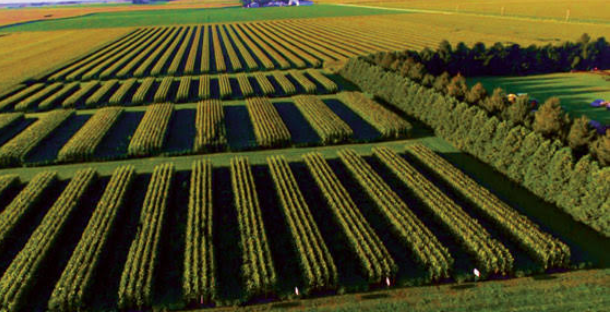
Farming is the basic activity through which man nourishes himself with food on daily basis. Different cropping systems are being used by farmers all over the world as a means of supplying the nutritional needs of the populace. Different factors had influenced the cropping system adopted by different people in different region all over the world. Such factors include land tenure, topography, climatic condition, superstitious beliefs, and religion etc.
Cropping system by definition refers to the combination of resource inputs and available technology for crop production. Or cropping system can also be referred to the crops and crop sequences, as well as the management techniques used on a particular field over a period of years. The traditional cropping systems are monoculture, intercropping, crop rotation, fallow systems, shifting cultivation, strip cropping, multiple cropping, contour strip cropping, and cover crops.
PRINCIPLES OF CROPPING SYSTEMS
1. Select crops that complement each other and system that share resources without causing nutrient deficiency
2. Select crop and a cropping system that maintain and enhance soil fertility
3. Select crops which have a diversity and growth cycle.
4. Select crop and a crop rotation which utilizes available resourses
5. Select a diverse specie of crops
6. Keep the soil covered
7. Strategically plan and modify your cropping system as needed.
8. Monitor your progress.
9. Soil and water conservation
IMPORTANCE OF CROPPING SYSTEMS
1. Control weeds
2. Improve soil fertility
3. Control pest and diseases
4. Enhance crop growth
5. Increase soil cover
6. Efficient utilisation of resources
7. Improve food and financial secirity
8. Reduce risk of crop failure
9. Reduce soil erosion
10. Improve the micro climate. etc.
TYPES OF CROPPING SYSTEM :
(A) SHIFTING CULTIVATION : Shifting cultivation is an agricultural system in which plots of land are cultivated temporarily, then abandoned. That is, the piece of land is cultivated for some years (2 to 4 years) depending on whether the settlers are permanently settled or not. When the soil nutrients are exhausted and crop yield is low, the farmer will abandon the farm and move to another land to continue his farming. This is different from bush fallow. In the case of bush fallow, the farmer would leave the cultivated land which is depleted of nutrients to grow into bushes for a period of two to three years (in densely populated areas) and five to eight years or more (in sparsely populated areas) to regain back it’s lost nutrient and he (farmer) would come back and continue is farming on the same piece of land. During the fallow period, the farmer moves elsewhere to farm before coming back to the fallowed land. The success and duration of cropping depend on climate, soil fertility, vegetation, type of crop grown, and intensity of cultivation etc.
BENEFITS OF SHIFTING CULTIVATION
1. It is the cheapest way to maintain soil fertility
2. The bush fallow period restore the organic matter and nutrient level of the soil
3. It is the best method for peasant farmers who cannot afford to purchase chemical fertilisers.
4. They system helps to control some pests and diseases
Under subsistence farming, two types of shifting cultivation exist.
a) TEMPORARY SHIFTING CULTIVATION
In temporary shifting cultivation, the people settle in an area and practice shifting cultivation within their vicinity and when the soil is depleted, they will migrate and settle in another location and start their farming at that location.
b) PERMANENT SHIFTING CULTIVATION
In permanent shifting cultivation, the farmers have a permanent settlement where they live but only their farm is not stationary. As the crop yield drops and the soil becomes depleted of nutrients, the farmer opens a new land and continue is farming their.
DISADVANTAGES OF SHIFTING CULTIVATION
1. Large area of land is wasted
2. It does not encourage long term planning
3. Increase in human population can result in reduction of fallow period. This result in insufficient nutrient build up in the soil.
4. Valuable forest areas and resources are destroyed due to repeated land clearing for farming.
5. Energy, time and money are lost due to shifting and land preparation. etc.
B) MONOCROPPING (Monoculture):
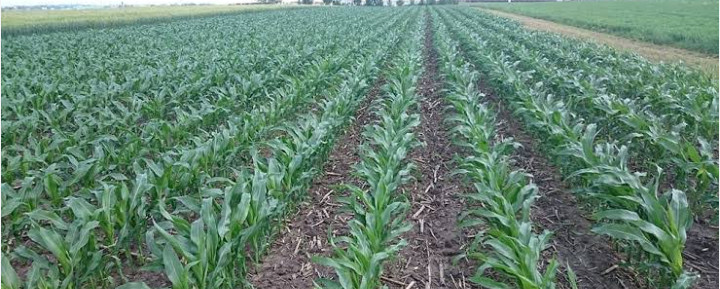
Mono-cropping also called sole cropping involves growing a single type of crop on a piece of land year after year. It is a system commonly used in plantation farming.
ADVANTAGES OF MONOCROPPING
1. It allows eas of mechanised farming.
2. It leads to specialisation in some crops.
3. It encourages perennial crop production
DISADVANTAGES OF MONOCROPPING
1. There is the risk of losing all crops should natural hazards such as disease outbreak, pest infestation and drought occur
2. It create nutrient imbalance in soil
3. It can bring about pest and disease biuld up.
4. Adverse climatic condition can cause poor yield
(C) MULTIPLE CROPPING :
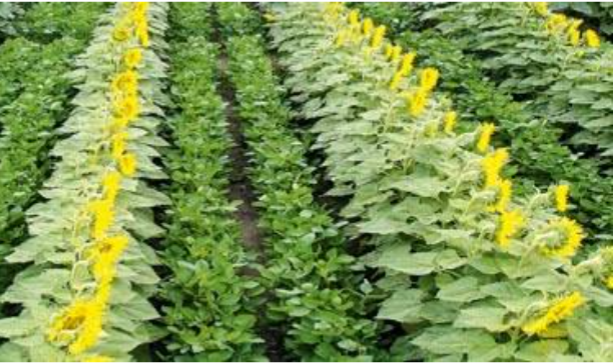
Multiple cropping involves growing two or more crops on the same piece of land within one calendar year. Annual and perennial crops can be grown together. For example planting rows of fruit trees like cashew with maize planted in between the Cashew trees.
BENEFITS OF MULTIPLE CROPPING
1. The tree crop can serve as wind break to protect the annual crops from logging during high intense wind
2. The fallen leaves of the tree crop can help increase soil fertility as they decay.
3. The two plants have access to nutrients at different soil depth
TYPES OF MULTIPLE CROPPING
1. STRIP INTERCROPPING: growing two or more crops in different strips large enough to permit inter row cultivation but narrow for crops to interact.
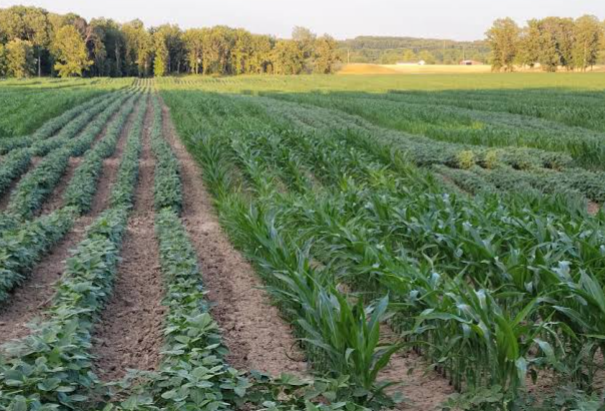
2. RELAY INTERCROPPING. : planting of a crop before the crop on the field mature.
3. SEQUENCIAL CROPPING: growing two or more crops in sequence on the same field in a year
4. Intercropping
5. Mixed cropping and
6. Patch intercropping.
(D) STRIP CROPPING : Strip cropping involves alternating closely SOWN of two or more crops in strip , such as cotton, corn, sugar beets, soybeans, etc., with small grains, such as millet, wheat, or hay.
(E) CONTINOUS CROPPING
This is the cultivation of a piece of land year after year. For example, cultivating cassava after cassava. Sustained and good crop yield under continuous cropping is based on good management and conservation of the soil. Soil fertility can be maintained under this system by application of fertilisers, use of legume fallow, crop rotation,
DISADVANTAGES OF CONTINOUS CROPPING
1. They system leads to nutrient exhustion
2. It leads to accumulation of weeds
3. It bring about pest and disease build up.
4. It can create problems of soil degradation
5. It can increase soil pH
6. It can cause soil erosion
7. It can increase non beneficial microbs increases nematodes in the soil etc.
(F) ALLEY FARMING
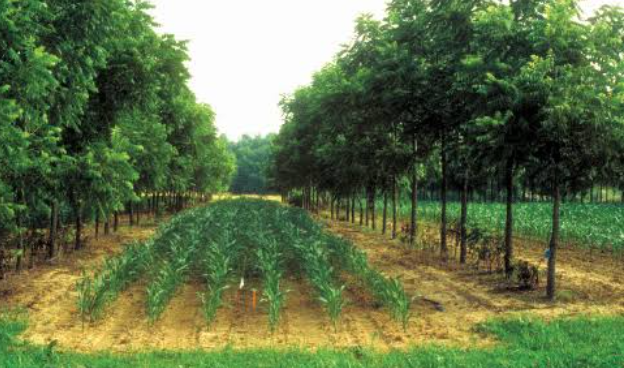
This is an Agroforestry system in which multi purpose tress and shrubs are planted in rows while food or annual crops are planted in the alleys between the trees.
ADVANTAGES OF ALLEY FARMING
1. The falling leaves from the tree increases soil nutrient when they decompose
2. The pruned tree branches can be feed to livestock
3. The tree stems can be cut and used as staking material
4. The trees help in controlling erosion
5. The tree crop can serve as a wind break to prevent food crop from lodging.
6. The tress and shrubs provide nitrogen rich mulching materials
DISADVANTAGES OF ALLEY FARMING
1. Not prunning the trees or shrubs can shade the annual crops
2. The trees and shrubs add to farm drudgery
3. The trees have no food value
4. The trees and shrubs provide no income to the farmer.
(G) CROP ROTATION :
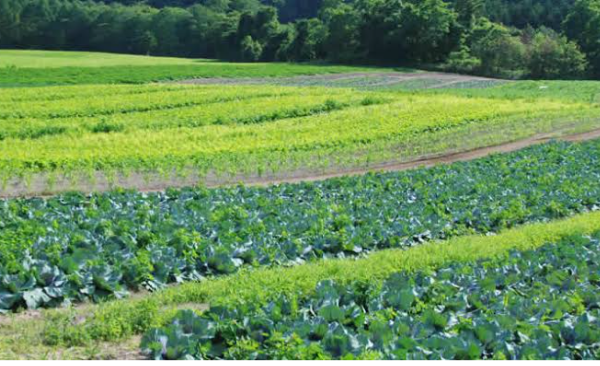
This is the cultivation of different crops in succession in different seasons on the same piece of land. It can simply be defined as a method of farming in which the same piece of land is kept under cultivation every year in such a way that the crop follow a definite sequence in such a way that the nutrients lost from the soil are replaced.
TYPES OF CROP ROTATION
1. One Year Rotation: A type of crop is planted for half of the year, and after the harvest, if the soil nutrient is still intact, another crop will be planted for the remaining half of the year.
2. Two Years Rotation: The two-year rotation is similar to the one-year rotation except that the duration of the rotation of crop planting is two years, and more crop included in the rotation. Two, three, or four crops can be planted during the entire rotation period.
3. Three Years Rotation: A duration of three years is used in this rotation period. The crops will be planted succession , one after the other, on the same land. After harvesting one crop, the nutrient requirement of the next crop to be planted must be meet.
ADVANTAGES OF CROP ROTATION
1. It helps in controlling pest and disease build up
2. It allows for the spread of economic risk
3. The legume crop inclusion will help in
supplying nitrogen to the soil.
4. It helps in improving soil structure
5. It helps in controlling soil erosion.
6. It increases and improves soil organic matter
DISADVANTAGES OF CROP ROTATION
1. It Involves Risk because pests and diseases can easily move from one crop to another, causing widespread infections
2. It is cost effective because certain crops need specific equipment, so farmers may have to invest in different types of machinery
3. It does not allow a farmer to specialize in a single crop type. The farmer cannot produce a single crop on a large scale
4. Requires More Knowledge and Skills
(H) MIXED CROPPING
This is the cultivation of more than one type of crop on a piece of land at the same time. For example, cultivation of maize and yam on a piece of land at the same time.
ADVANTAGES OF MIXED CROPPING
1. It prevent soil erosion
2. Planting of leguminous crop will help increase the nitrogen level in the soil
3. Insect pests and diseases cannot spread easily compared to mono-cropping system.
4. It reduces the risk of crop failure.
5. The farmer tends to harvest varieties of crop produce.
DISADVANTAGES OF MIXED CROPPING
1. The young crops may be trampled upon by foot during the harvesting of matured crops
2. Mechanised farming may not be possible.
3. Fertiliser application to each crop may be difficult
There are two types of mixed cropping. Interpanting and intercropping
a) INTERPLANTING:
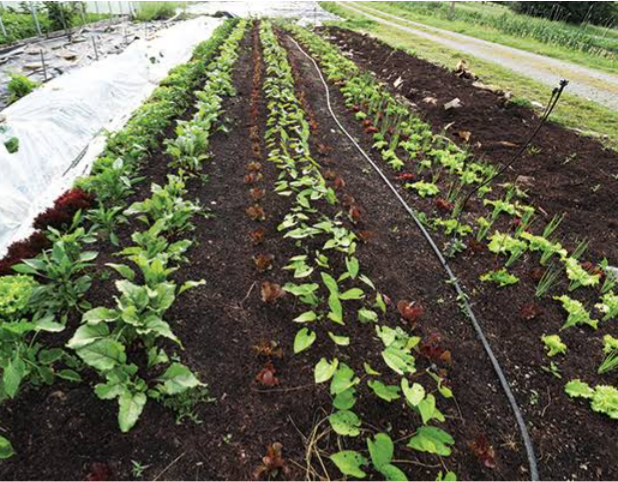
This is a form of companion planting, where two or more kinds of plants are grown together. Often, the two plants are grown alternately along the same row, or sometimes in alternate rows or blocks. In a simplified manner, it is the growing of a major crop in between another major crop on the same piece of land. The crop planted later remains on the field after the first crop had been harvested. Example is found in interpanting cassava with maize. Maize planted first is harvested first while cassava planted later is harvested after maize.
BENEFITS OF INTERPLANTING
1. it can be a natural form of pest control.
2. It increases yields as a result of planting the crops more densely. This makes interplanting a great technique for gardeners with limited growing space.
3. Plants with bountiful flowers can help attract pollinators to others which rely on insect help to set fruit.
4. Larger plants can provide shade for smaller plants
5. Heat-sensitive or tall and sturdy plants can provide support for climbers.
(b) INTERCROPPING :
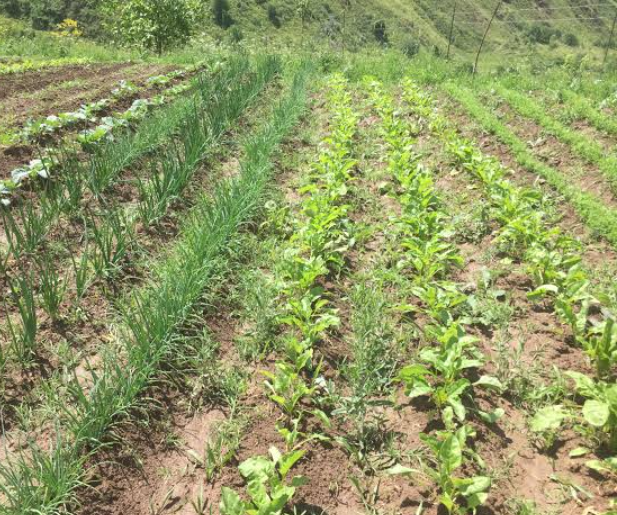
Intercropping is the growing of two or more crops simultaneously on the same piece of land with a definite row pattern. That is, it is the planting of quick growing and quick maturing crops between slow growing and slow maturing crops. For example, melon can be intercropped with yam at a ratio 1:3. Melon is quick growing and quick maturing while yam is slow growing and slow maturing (This means quick maturing crop completes its life cycle before the other crop starts) . Ratio 1:3 means after every one row of melon, three rows of yams are planted.
The main objective of intercropping is higher productivity per unit area in addition to stability in production. Intercropping is divided into two types:
1. additive series and replacement series, based on the percentage of plant population used for each crop in the intercrop system
2. Row cropping and mixed cropping based on arrangement of crops on rows
ADDITIVE SERIES: one crop is sown with 100% of its recommended population in pure stand, which is known as the base crops. Another crop known as intercrop is introduced into the base crop by adjusting or changing geometry. The population of intercrop is less than its recommended population in pure stand . Additive series is more efficient than replacement series in intercropping system. REPLACEMENT SERIES: both the crops are called component crops. By scarifying certain proportion of population of none component, another component is introduced. ROW INTERCROPPING: Each crop is planted in alternate single or double rows
MIXED INTERCROPPING: the component crops are intimately intermingled without any distinct row arrangement
ADVANTAGES OF INTERCROPPING
1. It supplies varied food from the crops for the farmer.
2. It is a system that suppresses weeds
3. Pests and diseases do not spread quickly compared to mono-cropping and mixed cropping
4. The system helps to improve soil structure
5. The system helps to reduce the risk of total crop failure. etc.
DISADVANTAGES OF INTERCROPPING
1. It does not give room for mechanisation to be practiced
2. Application of fertilisers to the crops may be tedious
3. Spraying of pesticides might be difficult
(H) LEY FARMING
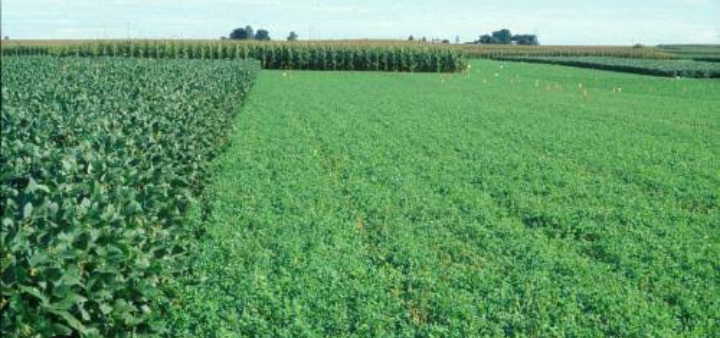
This is an alternate combination of pasture with crop production. The arable crop is planted and harvested before planting the pasture crops which are being grazed upon for a year or more. The pasture crops are grasses and legumes. The farmer practicing this system must be knowledgeable about crop production and Livestock management.
(I) MIXED FARMING : This is a system by which the farmer engages in both crop production and Livestock production at the same time. The crop produce and residues serve as food for the livestock while the animal dung and droppings serve as manure for the crops. The plant residues can also be used as bedding materials for the livestock.
TERMINOLOGIES
Component Crop: is used to refer to either individual crops making up the intercropping situation
Base Crop: is the one which is plated as its optimum sole crop population in an intercropping situation and
Second crop: is planted in between rows of base crop for obtaining bonus yield from intercrop without affecting base crop yield.
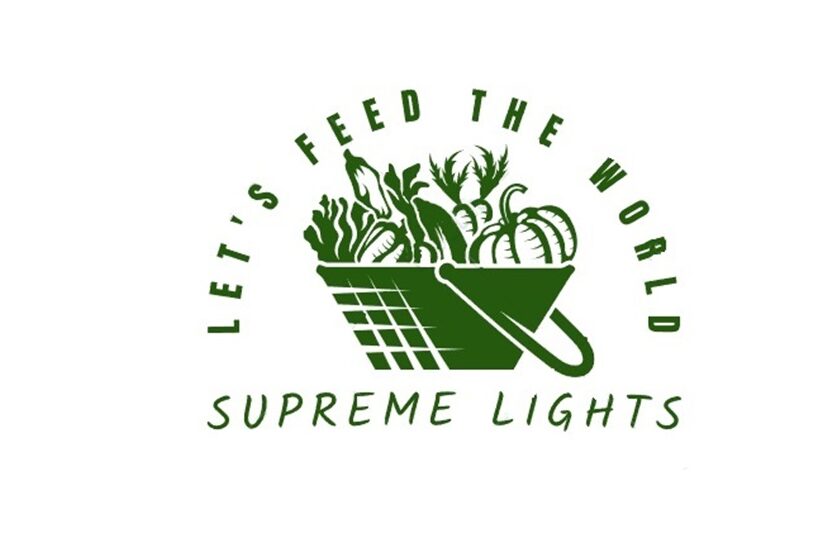
Pingback: elavil taken at night
Hi, Supremelights is delighted by your response to the site. If you have any aspect of Agriculture you want us to address, don’t ecitat to contact us.
Thank you. Hope to hear from you again. Bye